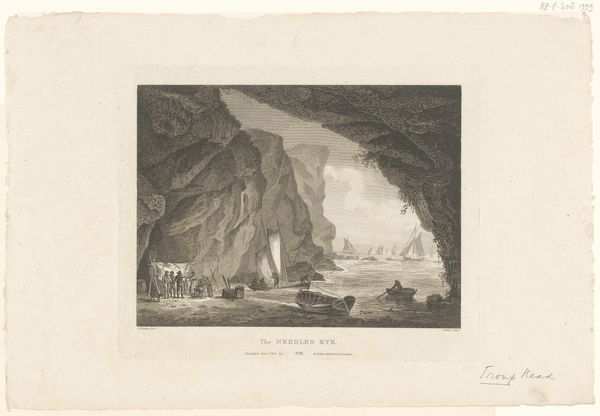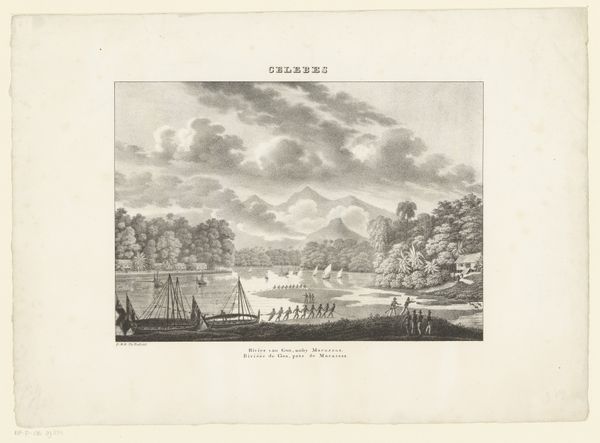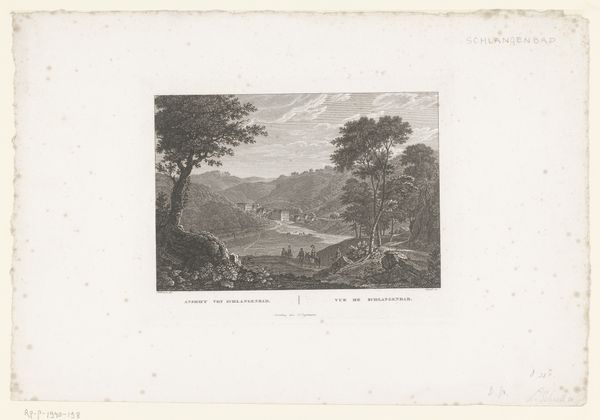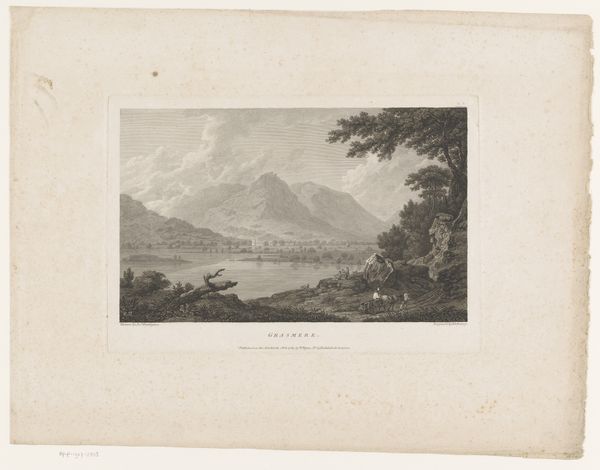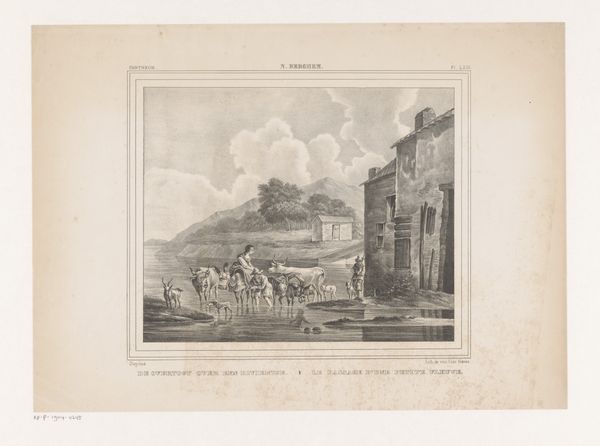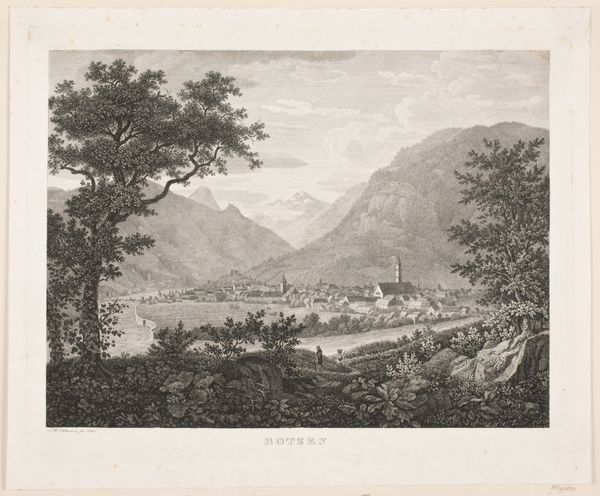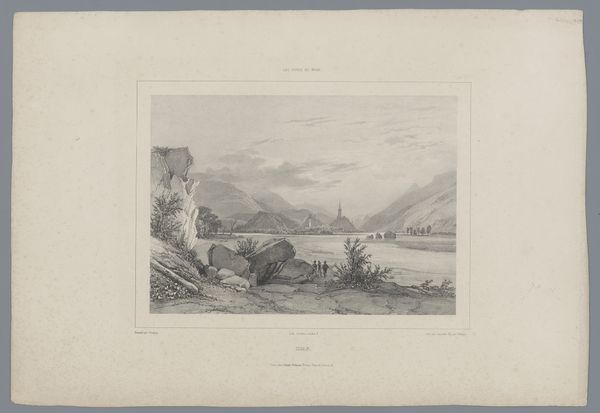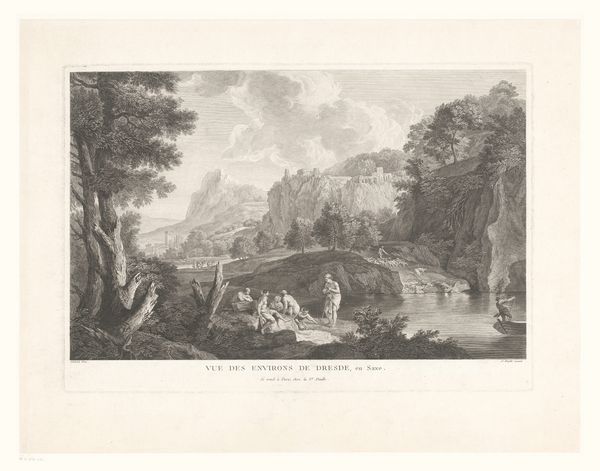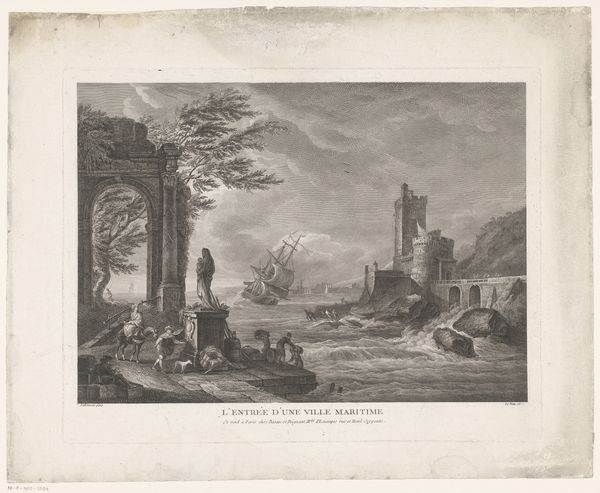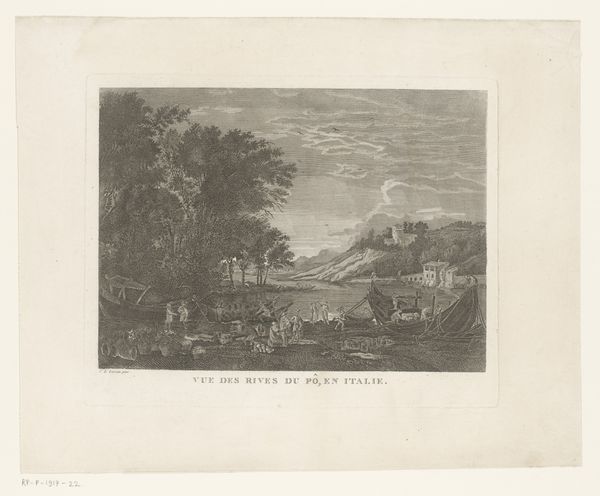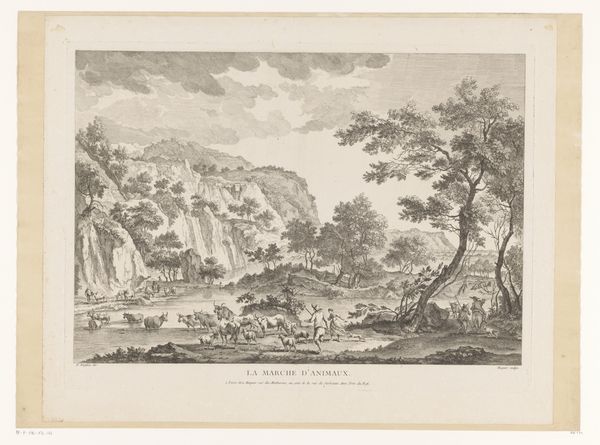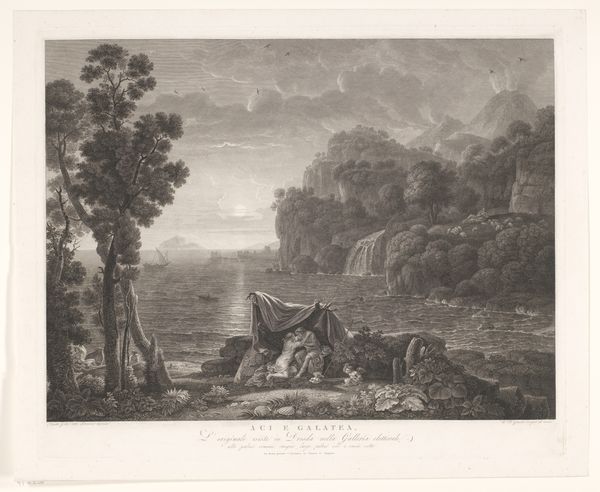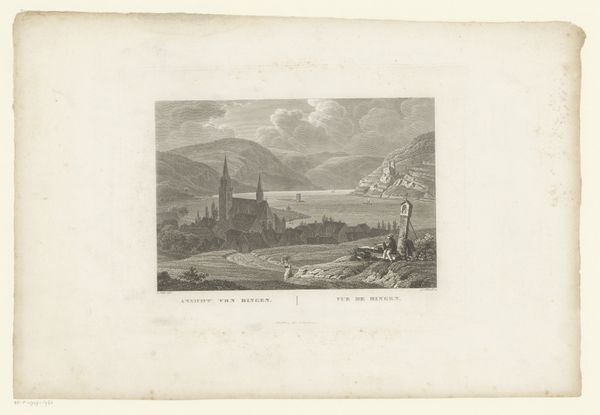
print, engraving
# print
#
landscape
#
cityscape
#
engraving
#
realism
Dimensions: height 226 mm, width 278 mm
Copyright: Rijks Museum: Open Domain
Curator: Here we have James Fittler's "View of the Harbor at Inveraray," an engraving from around 1801 or 1802. Editor: It has a melancholic beauty, I must say. The grey tones lend it a certain gravitas, and the careful arrangement creates a serene atmosphere despite the industry depicted. Curator: Absolutely. Notice the formal devices at play: the balanced composition, the play of light across the water, and the receding perspective leading the eye into the distance. Semiotically, one can observe how Fittler employs line and texture to convey depth and realism. Editor: And yet, if you think about it, this “realism” is carefully constructed. Inveraray was a planned town, largely rebuilt in this period by the Duke of Argyll to project power and modernity. It became a popular subject for artists as a symbol of Highland progress and Anglicization. Curator: True, but observe how he uses line and hatching to delineate forms, the contrast giving a spatial quality to the various figures at the harbour side, so tactile through the skillful handling of tone. Editor: Considering the historical context, what narratives do we find within the print? Notice how ordinary people – seemingly nameless – manually move vessels on the river with great effort in order to facilitate commercial navigation through the port? Curator: The emphasis is definitely on a structured landscape. He's certainly not critiquing the Dukes or highlighting hardship! Everything is orderly, nothing out of place. The horizon and balance point contribute to a classic aesthetic! Editor: Well, it's equally crucial that we consider how such idyllic images helped create a favorable public perception of aristocratic landowners and obscured the disruptions of the Highland Clearances occurring during this period. Visual culture as political tool, after all! Curator: Indeed. Despite what might seem like merely representational scene, there is a real sophistication about how the space functions and conveys its overall meaning, I agree! Editor: This piece certainly makes me want to rethink about landscape art. There's more than meets the eye if you think about how power shapes what we get to see and celebrate.
Comments
No comments
Be the first to comment and join the conversation on the ultimate creative platform.
